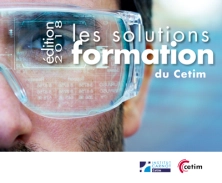 Une formation du Cetim pour découvrez les paramètres influant sur la tenue des assemblages vissés et les outils nécessaires à l’analyse de défaillances.
Une formation du Cetim pour découvrez les paramètres influant sur la tenue des assemblages vissés et les outils nécessaires à l’analyse de défaillances.
Deux sessions en 2018 :
Pour consulter le programme cliquez ici

 Une formation du Cetim pour découvrez les paramètres influant sur la tenue des assemblages vissés et les outils nécessaires à l’analyse de défaillances.
Une formation du Cetim pour découvrez les paramètres influant sur la tenue des assemblages vissés et les outils nécessaires à l’analyse de défaillances.
Deux sessions en 2018 :
Pour consulter le programme cliquez ici
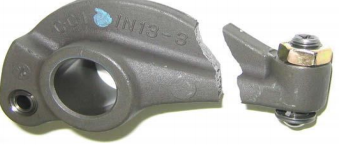 An article published in the « International Journal of Engineering Science and Computing« , September 2017.
An article published in the « International Journal of Engineering Science and Computing« , September 2017.
A rocker arm is a valve train component in internal combustion engines. As rocker arm is acted on by a camshaft lobe, it pushes and opens either the intake or exhaust valve. This allows fuel and air to be drawn into the combustion chamber during the intake stroke or exhaust gases to be expelled during the exhaust stroke. Rocker arms were first invented in the 19th century and have been changed a little in function since then. Improvements have been made, however, in both efficiencies of operation and construction materials. About Rocker arm of Tata Sumo, vista. They will make the exact design of rocker arm of Tata sumo …..Read more
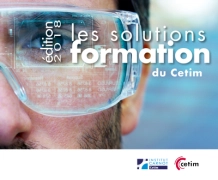 Les formations du Cetim.
Les formations du Cetim.Identifiez les causes des défaillances de vos assemblages soudés, bénéficiez d’un retour d’expérience efficace, et définissez les actions correctives et curatives (en réparation, conception ou fabrication).
A Saint-Etienne du 12/06/2018 au 13/06/2018
 Here is an interesting dissertation found on Web.
Here is an interesting dissertation found on Web.
Computational modeling of composite laminates for assessing stiffness and strength is a subject of contemporary interest to airframe manufacturers, such as the Boeing company. Progressive damage and failure analysis of composite laminates is complex and developing a robust computational model is the subject of this dissertation. The finite element (FE) method and computational studies using FE are mainstays in
structural analysis and design. Virtual testing is a subject where the requirements of carrying out several laboratory tests can be partially replaced through validated computational models so that the number of laboratory tests and hence costs associated with the tests, can be reduced without sacrificing accuracy.
 A publication of the « International Journal of Electronics, Electrical and Computational System » : Design and Material Optimization of 1.5MW Horizontal Axis Wind Turbine Blades with Natural Fiber Reinforced composites using Finite Element Method.
A publication of the « International Journal of Electronics, Electrical and Computational System » : Design and Material Optimization of 1.5MW Horizontal Axis Wind Turbine Blades with Natural Fiber Reinforced composites using Finite Element Method.
Global warming as well as increasing environmental awareness,also depletion of fossil fuelsdiverts the attention of both developing and developed countries towards non-conventionalenergy sources like wind a pollution free source of energy.
India is the fifth largest wind power producer in the world, many researches are going in India regarding wind energy power production system. This is one such work aiming at weight reduction of wind turbine blades by using hybrid composites, where 1.5MW wind turbineblades areconsidered which is highly used in the region of Visakapattanam at an
average cut-out windspeed range of 14 to 21m/s. The blades are designed and analyzed with different Natural Fiber Reinforced composite materials their weight, static and dynamic performances are compared. From the results obtained it identified that natural fiber reinforced blades weigh less than the glass fiber blades with competitive performance. Modeling and analysis of wind turbine blade have been done using UNIGRAFIC-NX (NX-CAD &NX-NASTRAN) software.
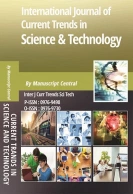 An article published in the « International Journal of Current Trends in Science and Technology« .
An article published in the « International Journal of Current Trends in Science and Technology« .
In the present study, samples of glass/epoxy (GE) composites and Multi walled carbon nanotubes filled glass/epoxy (MWCNT GE) composites are conditioned in normal water and sea water for 7, 10 weeks. After conditioning the samples for 7, 10 weeks respectively, the tensile strength (ASTM D3039 / D3039M), hardness were measured and compared with that of un-conditioned samples. In the as fabricated condition, CNT (0.2%)- glass/epoxy composite showed the highest strength among all the other composites fabricate and the ultimate strength showed. Conditioned at sea water for 10 weeks shows better results in all mechanical properties like ultimate tensile strength and hardness than conditioned at normal water.
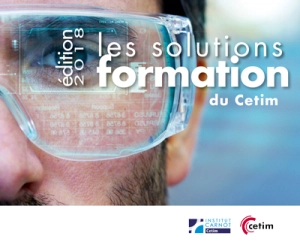 En 2018 pas moins de 10 stages de formation dans la catégorie « Analyse de défaillances » seront dispensés par les experts du Cetim.
En 2018 pas moins de 10 stages de formation dans la catégorie « Analyse de défaillances » seront dispensés par les experts du Cetim.
Ces formations sont dispensées par des ingénieurs référents en analyse de défaillances, intervenant dans des missions de conseil et d’assistances techniques en entreprises.
La pédagogie allie exposés techniques alternant théorie et études de cas, elle est agrémentée d’échanges et de questionnement avec les stagiaires.
Retrouvez le détail de ces formations en suivant le lien Formations Cetim et en choisissant le « critère technique » : Analyse de défaillances
Senvion a développé, avec le Cetim, un dispositif de contrôle non destructif capable de vérifier la qualité des arbres de transmission des machines sans les démonter. Lire l’article...
 Le catalogue formations 2018 du Cetim est disponible. Une offre regroupant 350 formations métiers déclinée en filières, dont une dédiée à l’industrie du futur avec notamment ses nouvelles technologies de fabrication additive, de robotisation ou de contrôle non destructif.
Le catalogue formations 2018 du Cetim est disponible. Une offre regroupant 350 formations métiers déclinée en filières, dont une dédiée à l’industrie du futur avec notamment ses nouvelles technologies de fabrication additive, de robotisation ou de contrôle non destructif.
En 2018, le Cetim revoit complètement son offre de formations. Son objectif : coller toujours plus à la réalité des entreprises et aux évolutions technologiques et normatives dans lesquelles le monde industriel est engagé. Ainsi, c’est dans un nouveau format décliné en filières que le catalogue Formations 2018 présente les 350 formations métiers, animées partout en France, permettant aux ingénieurs et techniciens d’approfondir leurs connaissances dans un domaine de la mécanique.

The crystallographic character of fine granular area (FGA) formation from internal particles in martensitic high strength steel has been revealed by an assessment of the plastic zone size at the FGA border. This plastic zone size corresponded to about 3 times the martensite lath width. Tests at different temperatures (20°C, 200°C and 400°C) revealed a decreasing FGA size with increasing temperature at constant applied stress amplitude. As a consequence, the critical stress intensity factor varied as the FGA decreased with temperature. In contrast, the critical plastic zone size remained constant and equal to the sizes of microstructural features. This represents a strong similarity between crystallographic, stage I-like, crack propagation and FGA formation in a vacuum. ….Read the article